The 7 best 3D tools for simulating fluids
Want your story to flow well? Then check out these great ways to create liquid dynamics.
This article is produced in association with Masters of CG, a contest for creatives in partnership with HP, Nvidia, and 2000 AD. Vote for your favourite entry today and you could win an HP Slate 7 Plus (*EU residents only).
In the last article, we looked at using fluids dynamics systems to recreate fire and smoke, but this time we're focussing on ways to create liquids – everything from pouring milk and squeezing toothpaste to massive tidal waves.
Generating flames and plumes of smoke isn't too difficult, and adding them to an existing scene can – for the most part – be a simple compositing job. But liquids are a level of magnitude harder to fake because of the complex way that they move and react to other objects. Simulations are much harder to calculate and the resulting geometry or particle files can be huge.
Many apps have built-in particle systems which, when combined with things like volume objects or metaballs can create the illusion of moving fluids, but without the correct particle interactions, you'll only ever get streams or jets, rather then swirling, pooling and splashing liquids.
There are two main ways to make a liquid: for close-ups of streams and splashes you can either mesh a particle stream and then add a suitable shader to the resulting geometry. This is the kind of thing you see on drinks commercials all the time. The second and much more computationally expensive method is to basically do it all with particles (maybe mixed with displaced ocean geometry). But for realistic water you need a lot of particles… like, billions.
01. Psunami
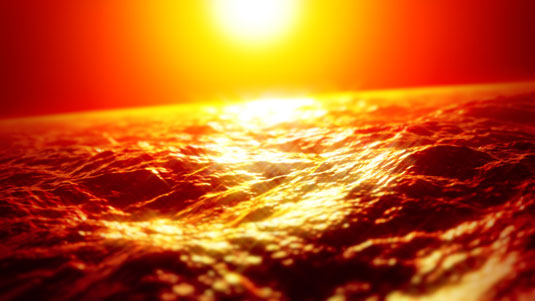
- Developer: Red Giant
- Price: $199
At the low end of the market, you can start with something like Psunami, a plug-in for After Effects.
Initially developed by Atomic Power back in 1999, Psunami generates a displaced plygon plane and then animates according to wave size, wind and so on. It's painfully slow, desperately needs updating, is only good for gentle rolling seas, but might be useful if you're making Waterworld 2 on a really tight budget.
Get the Creative Bloq Newsletter
Daily design news, reviews, how-tos and more, as picked by the editors.
02. Blender
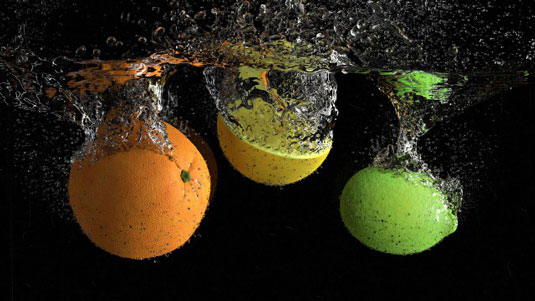
- Developer: Blender
- Price: Free
Being free, Blender is clearly the cheapest solution for fluid dynamics. And while its SPH (smoothed-particle hydrodynamics) solver is relatively basic, with the right set-up and high enough grid resolution, it can create some decent animations. Also, there are plenty of workarounds on the internet to get your simulated liquids into your app of choice.
03. Realflow 2014

- Developer: Next Limit
- Price: $2,500
The name most closely associated with liquids is Realflow 2014, which has been around since 1998, and you'll have seen in TV ads and movies such as Looper, X-Men: The Last Stand and The Avengers.
The latest release features methods for creating small-scale flowing fluids, as well as large scale waves and oceans with water splashes, foam and spray.
The app works in standalone mode but provides previews based on the Maxwell rendering engine, and has plug-in bridges to most of the big 3D apps, so you can set up your scene, move it to Realfow, simulate, and then return the geometry or particle data back to your app. The Learning Edition of Realflow is just $99/€75 and is an unlimited, fully functioning version of the app.
04. Navié Effex 2.0
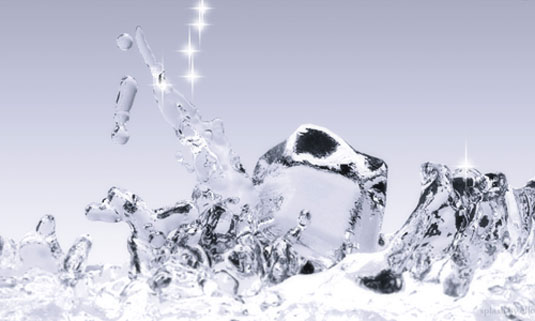
- Developer: DPIT
- Price: €999
We mentioned Navié Effex 2.0 with regard to simulating fire and smoke, but its fluid dynamics system supports a variety of methods and is capable of making anything from gloopy gels to crashing waves. The plug-in is nicely integrated into Cinema4D, so it can interact with scene objects directly, and offers lots of control over how the fluids behave.
Once the simulation is calculated and cached you can then mesh the particle field to create fluid surfaces, for rendering using the native renderers and shaders. Alternatively, you can render the particle field on its own inside C4D or with the C4D implementation of Krakatoa. Effex 2.0 is no substitute for a dedicated app, but is very capable, if a little slow, and ideal for small studios.
05. Phoenix FD
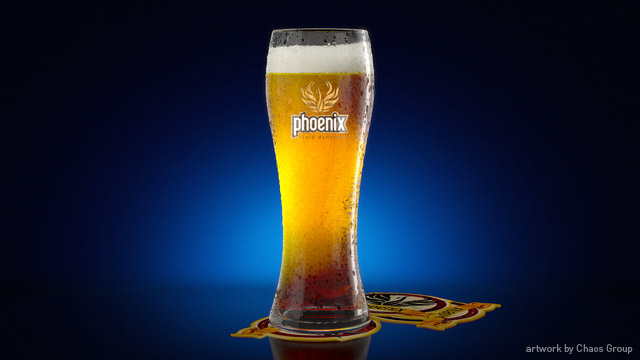
- Developer: Chaos Group
- Price: $890
Phoenix FD had a mention for making fire and smoke, but as it's a full fluid dynamics system it too can create liquids. It works on a very similar principle as when its making gaseous volumes, and is unusual in that it works with voxels rather than particles, generating the implicit surface at rendertime.
The latest version also features the ability to create bubbles, foam and splashes, and has morphing tools so you can actually shape the fluids to you liking. Phoenix FD for 3ds Max and Maya can produce ship wakes on the ocean, dribbling chcocolate or frothing beer, and when rendered with global illumination using V-Ray, the results can be quite spectacular.
06. Bifröst
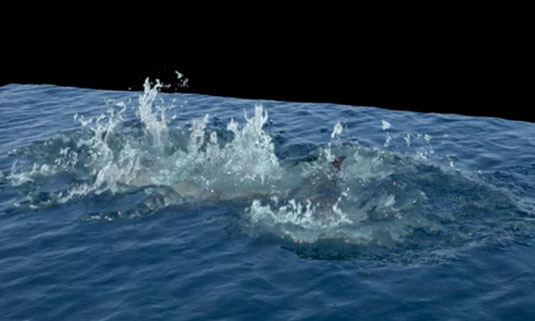
- Developer: Autodesk
- Price: £3,200
One app that caused quite a stir in the fluid scene was Naiad from Exotic Matter, which first appeared around 2009 in some mazing SIGGRAPH tech demos. Although unfinished, the technology was employed as a dedicated tool for VFX studios and was used in films including Avatar, X-Men first Class, Rise of the Planet of the Apes.
Naiad never even made it to version 1.0 before Autodesk bought the technology in August 2012. A year later, Naiad resurfaced as Bifröst – the procedural effects platform in Maya 2015.
It's capable of handling tens of millions of particles for large-scale fluid simulations, although it doesn't yet create foam and spray. However it does have the ability to produce velocity fields from displaced geometry and have that affect the particles, to produce rolling waves, for example. Bifröst is already a very impressive fluid simulation system, with more yet to come.
07. Houdini

- Developer: Side Effects Software
- Price: $4,995
Release 13 of the procedural VFX app Houdini features an updated version of its FLIP (fluid-implicit particle) solver, which is faster and more accurate, and allows the creation of mist as well as foam, spray and bubbles.
It also has a new surfacer – the operator which generates the liquid object from the particle source – which produces smoother surfaces and better 'sheeting', the thin layers of fluid held together by surface tension.
Houdini also has a dedicated Ocean FX simulator for making seas, beaches, waves and so on, combined with a new ocean material for more authentic looking sims. Houdini is a somewhat complex (and expensive) beast to get to grips with, but it's an absolute powerhouse if you need your fluids to interact with other elements such as soft- and rigid-body dynamics.
Words: Steve Jarratt
Steve Jarratt has been into CG for many years. A regular contributor to 3D World, he edited the magazine for a period of two years.
Masters of CG: voting now open!

In recent weeks, our Masters of CG contest has challenged you to create a new title sequence, film poster, main shot or ident for 2000 AD character Rogue Trooper.
Now all the entries are in, and we're pleased to reveal the shortlist for all to see. View the entries here! The competition will now enter a public voting phase, and we're asking you to help us the select the very best entries via the Masters of CG website. To entice you to vote, we're offering you the chance to win an HP Slate 7 Plus (*EU residents only).
Vote for your favourites today!

Thank you for reading 5 articles this month* Join now for unlimited access
Enjoy your first month for just £1 / $1 / €1
*Read 5 free articles per month without a subscription

Join now for unlimited access
Try first month for just £1 / $1 / €1

The Creative Bloq team is made up of a group of art and design enthusiasts, and has changed and evolved since Creative Bloq began back in 2012. The current website team consists of eight full-time members of staff: Editor Georgia Coggan, Deputy Editor Rosie Hilder, Ecommerce Editor Beren Neale, Senior News Editor Daniel Piper, Editor, Digital Art and 3D Ian Dean, Tech Reviews Editor Erlingur Einarsson, Ecommerce Writer Beth Nicholls and Staff Writer Natalie Fear, as well as a roster of freelancers from around the world. The ImagineFX magazine team also pitch in, ensuring that content from leading digital art publication ImagineFX is represented on Creative Bloq.
